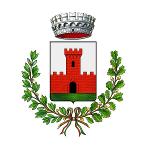Bicchierotto - Crude Glass
Ultimo aggiornamento: 30 maggio 2024, 12:22
Vaso o boccale con una sola ansa che presenta un orlo piuttosto alto e assottigliato, abbellito con una semplice modanatura e con tre bugne.
L’ansa è particolare: è verticale a doppio bastoncello raccordato con, nella parte superiore, un’appendice sopraelevata.
Come gli altri oggetti ceramici, anche questo è realizzato con la tecnica detta “a colombino” oppure a “cercine” che consiste nel formare lunghi cordoni di argilla e arrotolarli su sé stessi fino a formare il vaso.
Spesso in sostituzione dei cordoni si modellavano delle fasce di argilla che, allo stesso modo dei cordoni, venivano arrotolate su sé stesse per dare la prima forma del vaso.
Il boccale è alto quasi 9 cm.
Il bicchierotto fa parte del corredo funerario della tomba 19 che ospitava una donna picena di rango elevato e che probabilmente era la dama a capo della gens, vista la presenza di un elemento in ferro interpretato come staffa per alloggiamento dell’asse rotante del carro.
Accanto alla testa c’erano numerosi orecchini, collane, fibule e pendagli. All’altezza dei fianchi vi erano alcuni spiedi infilati in rocchetti, mentre ai piedi una grande olla di impasto e più in là un caldaio di bronzo. Oltre questi anche oggetti di osso e una moltitudine di vasi di terracotta, alcuni anche con fini decorazioni e in bucchero, il colore nero-lucido della ceramica.
Datazione: primo quarto del VI sec. a.C. (tra il 600 e 575 a.C.)
ENGLISH
Vase or mug with a single handle that has a rather high and thinned edge, adorned with a simple molding and with three clews.
The handle is peculiar: it is vertical with a double rod connected with an elevated extension in the upper part.
Like the other ceramic artefacts, this one is also made with technique called "colombino" which consists in rolling up long strings of clay, widening it or tightening it to give a shape to the jar. Often, in place of the cords, bands of clay were modeled which, in the same way as the cords, were rolled on themselves to give the first shape of the vase.
The mug is almost 9 cm high.
The glass is part of the funerary kit of Tomb nr 19 that hosted a Picen woman of high rank and that was probably the lady at the head of the gens (family group), given the presence of an iron element that seems to be the bracket for the enclosure of the rotating axis of the chariot.
Next to the head there were numerous earrings, necklaces, fibulas and pendants. Close to the hips there were some skewers tucked into reels, while close to the feet, a large jar of dough and further on, a bronze boiler. Besides these artefacts, there were also bone objects and a multitude of clay pots, some of them with fine decorations and in bucchero, the black-shiny color of the ceramic.
Dating: first quarter of the sixth century BC (between 600 and 575 B.C.)
